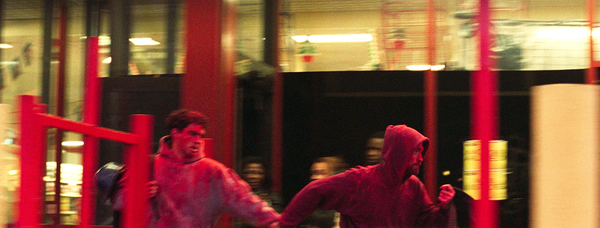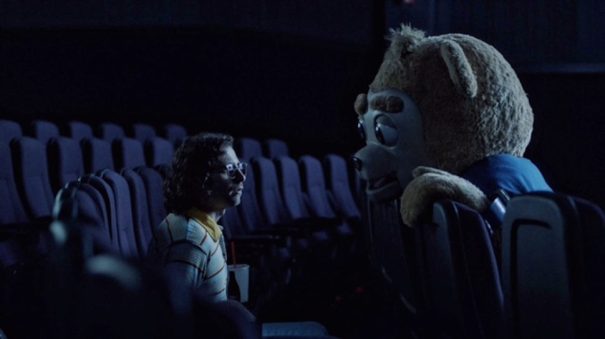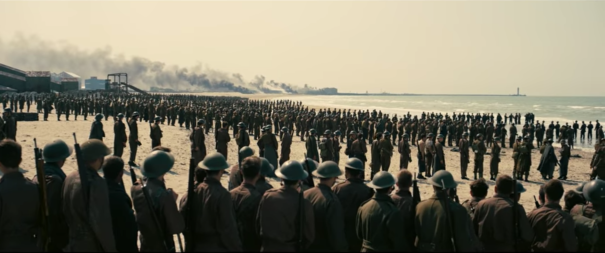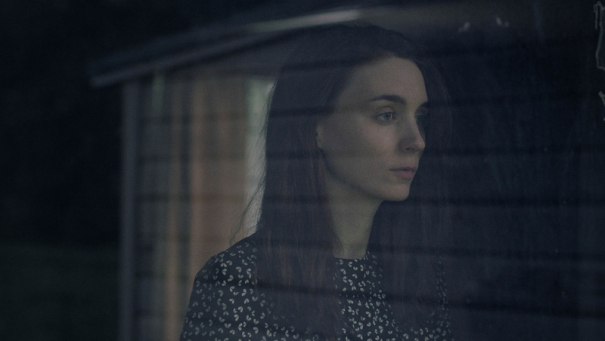
One of the mollifying aspects of nostalgia, which has taken a strong grip on American culture of late, especially as we all cope with exponential advancements of technology and the constant bombardment of media from streaming services, is that it provides a recess from the fast-paced media-driven craze of today’s world. It allows us to dive back into a time when everything just seemed quieter. It’s rather ironic then that Ready Player One is so high-octane and exhausting. The movie is a pop-culture junkie’s version of snorting three lines of cocaine. For some, that’s a high. For others, it’s another instantly gratifying entertainment that provides no lasting value. I feel somewhere in between these two extremes.
The film’s most interesting aspect is in its mythologization of James Halliday, the OASIS’s creator. His character essentially mirrors the way nostalgia has evolved in internet culture. It starts off as a fond personal memory of cultural markers which shaped us, especially those “nerds” such as Halliday, as adults. But once internet culture got a grip of nostalgia it turned into something weird and malformed. Its personal weight started to lessen. It flattened into a 2D stream of a million different “references” whizzing by your eyes with each click. Halliday’s OASIS is filled with his favorite media references when he was a kid, but they’re so vast and they exist in such quantity and velocity within the game that they don’t register as anything other tokens of remembrance. The OASIS, as a virtual reality program, is the physical written and produced manifestation of an “Only 80’s/90’s Kids Will Remember This!” meme that you see re-posted on Twitter every day.
 The underlying darkness of the film’s social commentary occurs as we, along with the central characters, discover the clues that tie together Halliday’s life. His obsession with his own past, the pop culture remnants of his childhood as well as the devastating regrets he had as a person, descends into unhealthy levels as more is revealed. At the end of the film, after Wade wins the game, Wade Watts is transported to Halliday’s childhood bedroom, where he speaks with him. It’s not enough that the film suggests Halliday was so possessed by a long-gone past that he downloaded his own conscience into his video game (Wade asks, “you’re not a hologram are you?”), but that Halliday also keeps a younger version of himself alongside for company.
The underlying darkness of the film’s social commentary occurs as we, along with the central characters, discover the clues that tie together Halliday’s life. His obsession with his own past, the pop culture remnants of his childhood as well as the devastating regrets he had as a person, descends into unhealthy levels as more is revealed. At the end of the film, after Wade wins the game, Wade Watts is transported to Halliday’s childhood bedroom, where he speaks with him. It’s not enough that the film suggests Halliday was so possessed by a long-gone past that he downloaded his own conscience into his video game (Wade asks, “you’re not a hologram are you?”), but that Halliday also keeps a younger version of himself alongside for company.
The lack of fulfillment in Halliday’s life forced him to retreat to an era where he felt he was his best self, his happiest self, so much so that he kept that version of himself near him at all times. In small doses, these moments of escape provide mental balance and a harmonious re-connection to where we came from. But the further we are dedicated to constantly holding onto what used to be, in pop culture, politics, social ideas, anything, the less we find ourselves dedicated to progress. In the end of the film, Wade decides to change the way the OASIS works. His final statement declares that people need to spend time outside and in the “real world”. This is as deep a cut as Spielberg has possibly ever made on American society. Spielberg’s ability to elevate the shallow and lazy self-satisfied geekdom of the novel into an actual discussion of nostalgia’s effect on human memory and its toll on us, is what makes him one of America’s greatest filmmakers.

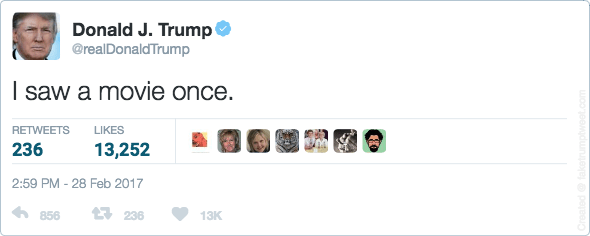




 Centering a film on children, especially annoying and mischevious ones, is walking a tight-rope. How far can you take their shenanigans until they become completely unlikeable? Where do you draw the line so their cutesy antics remain “bad but funny” and never go to being actually cruel? Mooney, Jancey, and Scooty, all around the ages of 6, 7, or 8, engage in a wide spectrum of practical jokes, from spitting on peoples cars from the balcony to shutting off the power grid. Yet, they remain the absolute heart and soul of Sean Baker’s The Florida Project, a highlighter-markered dramedy adventure with an incredibly dark undercurrent.
Centering a film on children, especially annoying and mischevious ones, is walking a tight-rope. How far can you take their shenanigans until they become completely unlikeable? Where do you draw the line so their cutesy antics remain “bad but funny” and never go to being actually cruel? Mooney, Jancey, and Scooty, all around the ages of 6, 7, or 8, engage in a wide spectrum of practical jokes, from spitting on peoples cars from the balcony to shutting off the power grid. Yet, they remain the absolute heart and soul of Sean Baker’s The Florida Project, a highlighter-markered dramedy adventure with an incredibly dark undercurrent.







